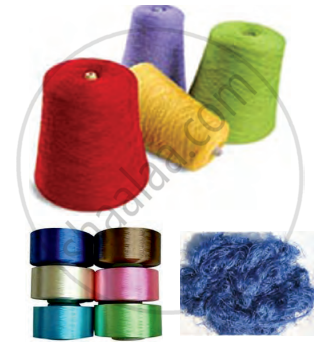Topics
Crop Production and Management
- Crop and Its Types
- The Green Revolution
- Soil Formation and Preparation for Agriculture
- Agricultural Implements
- Fertilizers
- Manuring (Biomanuring)
- Fertilizers
- Methods to Replenish Nutrients in Your Soil
- Improved methods of agriculture
- Food Security
- Weeding
- Harvesting of Crops
- Storage of Food Grains
- Animal Products used as Food
Microorganisms: Friend and Foe
Coal and Petroleum
- Conventional energy resources or non-renewable energy resources
- Carbon: a Versatile Element
- Special Features of Carbon
- Non-crystalline/Amorphous Forms: Coal
- Extraction of Coal
- Non-crystalline/Amorphous Forms: Coke
- Petroleum
- Refining of Crude Petroleum
- Natural Gas
- Some Natural Resources Are Limited
Synthetic Fibres and Plastics
- Fibre
- Fabrics
- Man-made Fibre: Synthetic Fibres
- Rayon
- Nylon
- Dacron, Terylene, Terene
- Man-made Fibre: Plastics
- Biodegradable Plastics
- Harmful Effects of Plastics
- Recycling of Plastic
Combustion and Flame
- Combustion
- Precautions and Safety Measures
- Types of Combustion
- Flame
- Fuel
- Types of Fuel
- Fuel Efficiency
Materials: Metals and Non-metals
Conservation of Plants and Animals
- Deforestation and Its Causes
- Consequences of Deforestation
- Conservation of Forest
- Conservation of Wildlife
- Biosphere Reserve
- Flora and Fauna of Forest Ecosystem
- Endemic Species
- Wildlife Sanctuary
- National Park
- Red Data Book
- Migration
- Recycling of Paper
- Reforestation
Reproduction in Animal
- Reproduction
- Reproduction
- Mode of Reproduction in Animal
- Sexual Reproduction in Animals
- The Male Reproductive System
- The Female Reproductive System
- Gametogenesis
- Fertilization in Human
- Embryonic Development in Human
- Embryo Formation in Viviparous and Oviparous Animals - Young Ones to Adults
- Asexual Reproduction in Animal
Reaching the Age of Adolescence
- Adolescence and Puberty
- Changes at Puberty
- Secondary Sex Characteristics
- Role of Hormones in Initiating Reproductive Function
- Reproductive Phase of Life in Humans
- Sex Determination
- Hormones Other than Sex Hormones
- Role of Hormones in Completing the Life History of Insects and Frogs
- Reproductive Health
- Nutritional Needs of Adolescents
- Personal Hygiene for Adolescence
Cell - Structure and Functions
- Cell: Structural and Functional Unit of Life
- The Invention of the Microscope and the Discovery of Cell
- Organisms Show Variety in Cell Number, Shape and Size
- Structure of the Cell
- Plasma Membrane
- Semi-permeable Membrane (Cell Membrane)
- Cell Wall - “Supporter and Protector”
- Nucleus - “Brain” of the Cell
- Cytoplasm - “Area of Movement”
- Plastids
- Non-living Substances Or Cell Inclusion
- Prokaryotic and Eukaryotic Cell
- Plant Cell and Animal Cell
Force and Pressure
- Force
- Force - Push or Pull
- Forces Are Due to an Interaction
- Exploring Forces
- A Force Can Change the State of Motion
- Force Can Change the Shape of an Object
- Effect of Force
- Types of Force: Contact Force
- Types of Force: Non-Contact Force
- Thrust and Pressure
- Pressure of liquid
- Factors Affecting Liquid Pressure
- Atmospheric Pressure
Friction
- Force of Friction
- Factors Affecting Friction
- Friction - A Necessary Evil
- Effects of Friction
- Increasing and Reducing Friction
- Kinds of Friction
- Fluid Friction
Sound
- Sound
- Production of Sound
- Sound and Music
- Sound Produced by Humans
- Propagation of Sound
- Sound Need a Medium to Travel
- Human Ear
- Characteristics of a Sound Wave
- Oscillator, Oscillation and Oscillatory Motion
- Properties of Sounds
- Loudness and Intensity
- Pitch (or shrillness) and frequency
- Audibility and Range
- Noise and Music
- Noise Pollution
Chemical Effects of Electric Current
- Conductor of Electricity: Liquid
- Electricity
- Chemical Effects of Electric Current
- Conductors and Insulators
Some Natural Phenomena
- Lightning and Lightning Safety
- Force of Friction
- Electric Charge
- Types of Charges and Their Interaction
- Transfer of Charges
- Electroscope
- Lightning and Lightning Safety
- Earthquake
- Protection Against Earthquakes
Light
- Light
- Reflection of Light
- Terms Used in Reflection of Light
- Law of Reflection of Light
- Types of Reflection
- Multiple Reflections
- Prism
- Dispersion of Light Through Prism and Formation of Spectrum
- Human Eye
- Care of the Eyes
- Visual Impairment and Braille System
Star and Solar System
Pollution of Air and Water
- Pollution and Its Types
- Air Pollution and Its Causes
- Case Study: The Taj Mahal
- Green House Effect
- Preventive Measures of Green House Effect
- Global Warming
- Preventive Measures of Global Warming
- Prevention of Air Pollution
- Water Pollution and Its Causes
- Case Study: Ganga Pollution and Ganga Action Plan
- Potable Water
- Purification of Water
- Prevention of Water Pollution
Synthetic Fibers:
Synthetic fibres are also known as artificial or man-made fibres. These fibres are created in factories using chemicals and technology, unlike natural fibres that come from plants or animals.
Examples:
- Some common synthetic fibres you might have heard of include nylon, dacron, terylene, terene, polyester, and rayon.
- These names are all different types of synthetic fibres, each with its own unique properties and uses.

Artificial threads
Reasons for the Development of Synthetic Fibers;
- Meeting Growing Demand
- Cost-Effectiveness
- Durability and Strength
- Consistency in Quality
- Versatility
If you would like to contribute notes or other learning material, please submit them using the button below.
